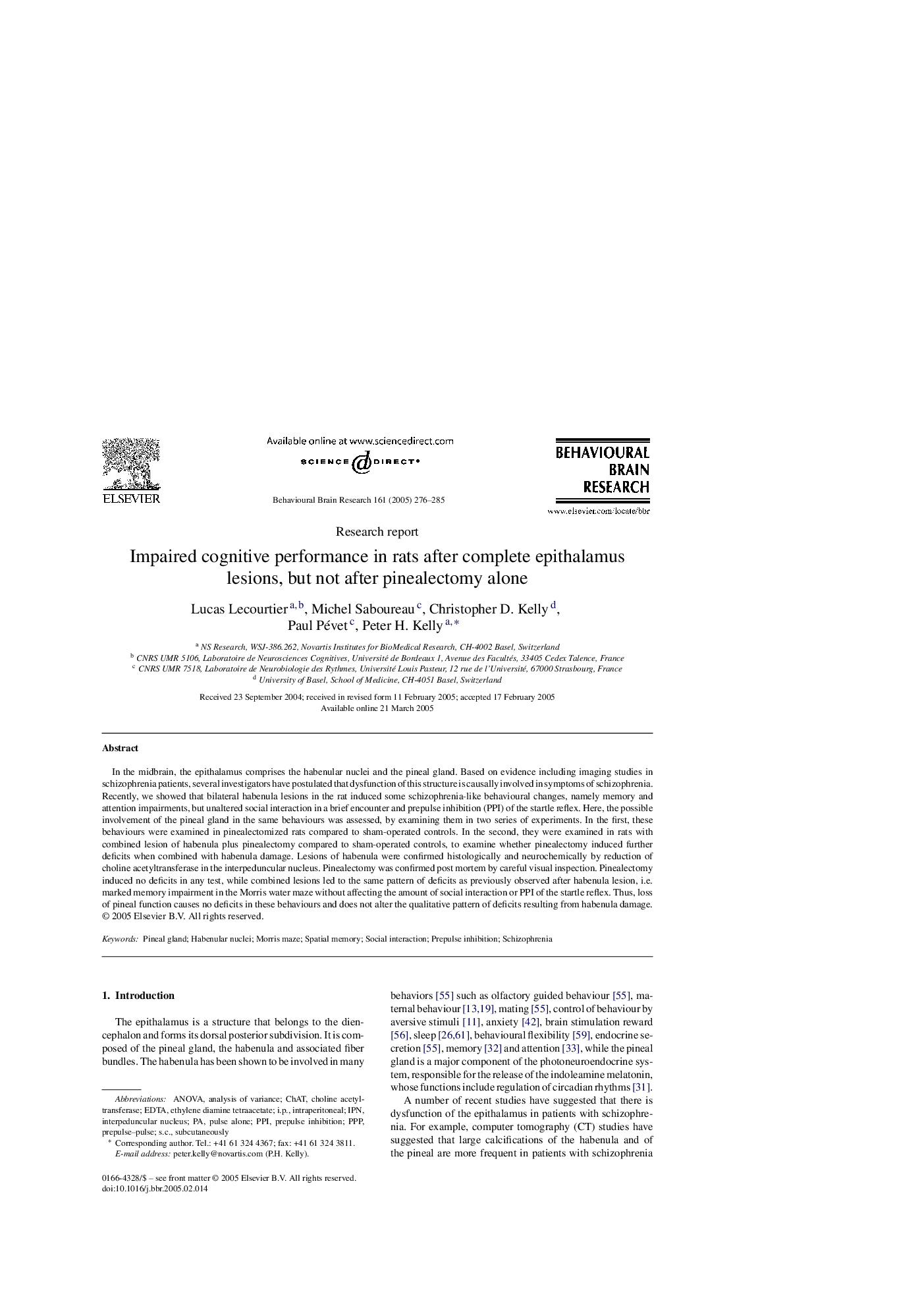| Article ID | Journal | Published Year | Pages | File Type |
|---|---|---|---|---|
| 9406435 | Behavioural Brain Research | 2005 | 10 Pages |
Abstract
In the midbrain, the epithalamus comprises the habenular nuclei and the pineal gland. Based on evidence including imaging studies in schizophrenia patients, several investigators have postulated that dysfunction of this structure is causally involved in symptoms of schizophrenia. Recently, we showed that bilateral habenula lesions in the rat induced some schizophrenia-like behavioural changes, namely memory and attention impairments, but unaltered social interaction in a brief encounter and prepulse inhibition (PPI) of the startle reflex. Here, the possible involvement of the pineal gland in the same behaviours was assessed, by examining them in two series of experiments. In the first, these behaviours were examined in pinealectomized rats compared to sham-operated controls. In the second, they were examined in rats with combined lesion of habenula plus pinealectomy compared to sham-operated controls, to examine whether pinealectomy induced further deficits when combined with habenula damage. Lesions of habenula were confirmed histologically and neurochemically by reduction of choline acetyltransferase in the interpeduncular nucleus. Pinealectomy was confirmed post mortem by careful visual inspection. Pinealectomy induced no deficits in any test, while combined lesions led to the same pattern of deficits as previously observed after habenula lesion, i.e. marked memory impairment in the Morris water maze without affecting the amount of social interaction or PPI of the startle reflex. Thus, loss of pineal function causes no deficits in these behaviours and does not alter the qualitative pattern of deficits resulting from habenula damage.
Keywords
Related Topics
Life Sciences
Neuroscience
Behavioral Neuroscience
Authors
Lucas Lecourtier, Michel Saboureau, Christopher D. Kelly, Paul Pévet, Peter H. Kelly,
